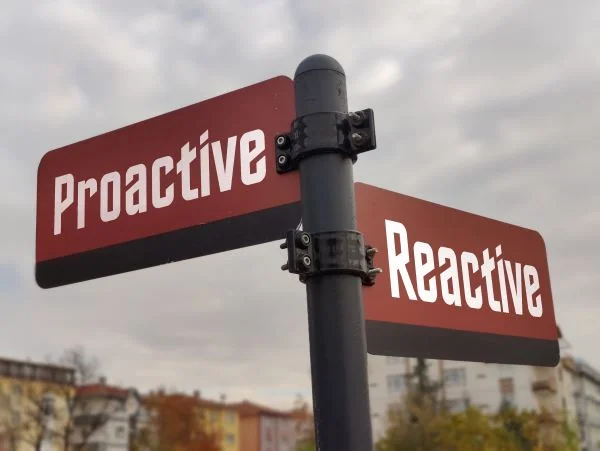In preparing for battle I have always found that plans are useless, but planning is indispensable. —Dwight D. Eisenhower
Everybody has a plan until they get hit; normally people don’t deal with it that well. —Mike Tyson
Whether Agile or Waterfall, combat, coding, or carpentry, before beginning the work, successful project managers ask eight, key questions. The answers help in planning the project and for adapting it when, as Mike Tyson might say, they „get hit“.
1. What does the customer want?
Beatle George Harrison said, “If you don’t know where you’re going, any road’ll take you there.” To know where they are going, effective project managers begin by framing the client need in a Project Statement that concisely captures: what they want, when they want it and how much they want to spend.
While some may view this iron triangle of Time, Cost and Performance as rigid, in the final analysis, whether it is a Waterfall project to build a house or an Agile project to develop software, project managers need to understand their customer’s „targets“ for Time/Cost/Performance so they know where they are going.
2. Why does the customer want it?
If building a house, is it for retirement, vacations or raising a family? If developing software, is it for managing client information, trading financial products or tracking inventory? Project management, particularly when we get hit, requires making decisions.
Although Time and Cost are often relatively easy to define, Performance may be less so. But all three (Time/Cost/Performance) must be considered in concert. What is more important: form or function? durability or flexibility? cost to implement or cost to maintain? Effective project managers understand and use customer objectives to align the decisions, both large and small, needed to guide project work.
3. How are we going to deliver the results?
Whether project work is in major deliverables, sub-deliverables, and work packages (classic Waterfall terminology), or epics, user stories and sprints (Agile terminology), project managers need to use the customer’s objectives to define and organize that work. The more accurately they define the work, the more accurately they will be able to identify appropriate resources, estimate the budget, calculate the timeline and monitor progress of both the short bursts and the long haul.
4. How much will it cost?
Projects have limited resources, particularly people. Organizations can avoid approving more projects than there are resources by assessing the types and amounts of skill sets needed and any additional resources required. With this understanding, the project manager can calculate the cost of the project, taking into consideration both hard cost dollars and soft cost resource hours.
With answers to the first, four questions, project managers now can review the reasonableness of the client’s “target” for Performance and Cost. But an accurate estimation of Time requires more information, which we will discuss below. At this point, if the estimated budget to deliver the desired performance is too high, there are three choices: 1) accept the higher budget; 2) accept less performance; or 3) reject the project. Painful choices now but more painful after consuming time and resources and having less ability to adapt.
Once Performance and Cost are agreed and it makes sense for the project to move ahead, these questions direct the way forward:
5. Who will do the work and how long will it take?
With an understanding of the work and resources required, effective project managers assemble a team based upon people’s skills and availability. Resource availability is the main factor in estimating the duration of work as opposed to time-on-task.
For example, if 16 hours of time-on-task is needed to complete a piece of work and one person can allocate four hours a day, the duration will be four days. But, if two people can allocate eight hours a day, the duration will be one day. Whether carpentry or coding, project managers need to estimate how long it will take to complete each task, taking into consideration resource availability.
6. In what order?
The biggest difference between Agile and Waterfall projects is the cost of re-work. Certainly, both share lost opportunity and re-work cost, but when the output is physical, rather than virtual, design changes tend to be more costly.
When building a house, changing the design as you go might require replacing the utilities, the frame or the foundation. When designing software, changing the design as you go might only require deleting code. Because of this, Waterfall projects tend to follow a specific sequence, while Agile projects can flex the sequence, perhaps completing the ‘house’ one room at a time.
However, regardless of the final sequence, effective project managers must determine the total time required to complete all the work given the availability of resources.
7. When will the work happen?
As with the order, in a project with virtual rather than physical outputs, flexing dates for specific elements is fine, if it doesn’t have an adverse impact on Time, Cost or Performance. However, for a project with physical inputs and coordinated deliveries to the resources who need them, it is important to have specific dates. Again, whether Agile or Waterfall, coding or carpentry, the customer has a target date when they expect all the elements to be completed. Effective project managers need to assess if that date is realistic and then manage the work to meet that date.
8. What If?
Back to Eisenhower and Tyson. We now have a plan, a budget, committed resources and a timeline. How can we keep the plan from going sideways and how will we recognize and respond if it does? Before committing to deliver, effective project managers step back, examine the whole and consider what they might have missed. Taking preventive actions, preparing contingent actions and setting triggers for action may result in additional work; Cost and Time for this should be included in the final plan presented to the client.
With answers to the last four questions, we can again review the reasonableness of the client’s “target” with respect to Time in addition to Cost and Performance. As when the budget is higher than the initial “target”, when the timeline is longer than desired, there are three choices: 1) accept the longer timeline; 2) accept less performance; or 3) reject the project. Before proceeding, good project managers ask, “Should/how should we continue?” Once that question is answered, they are ready to formally start implementing their plan.
As Eisenhower and Tyson implied, no project plan survives unscathed; at some point we will get hit and need to adapt. Effective project managers know this and actively prepare for it as they define and plan the project, while there are still multiple options for achieving the goals. Once a project starts, we have entered the ring or cut checks or cut pipe. Options become limited, and the impact of changes or rework are costly. In addition, the fallacy of sunk costs will begin to set in: we have already invested so much we can’t quit now. To minimize this and prepare in case it happens, effective project managers look before they leap – they ask these eight, key questions and use the answers to improve project outcomes.
About Kepner-Tregoe
Kepner-Tregoe has been the industry leader in problem-solving and service-excellence processes for more than 60 years. The experts at KT have helped companies raise their level of incident- and problem-management performance through tools, training and consulting – leading to highly effective service-management teams ready to respond to your company’s most critical issues.



